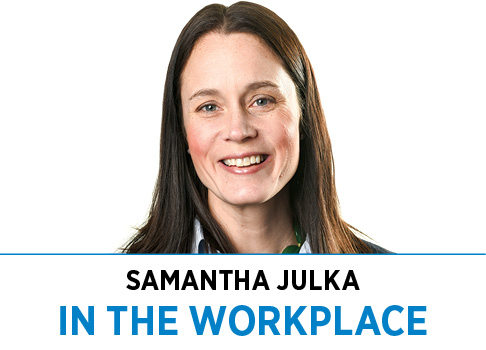Subscriber Benefit
As a subscriber you can listen to articles at work, in the car, or while you work out. Subscribe Now Remember growing up sharing your bedroom with your sister? Well, I didn’t have any sisters (thanks a lot, Mom and Dad), but I did have a lot of “Full House” reruns. Watching “Full House,” I learned how my idol, D.J. Tanner, navigated the treacherous waters of sharing a room with her little sister, Stephanie. I specifically remember an episode in which D.J. came up with the brilliant plan to use a tape line on the floor to delineate her space from Stephanie’s space. Of course, once Stephanie was in her space, she had zero access to the door to exit the room, and I think we all know that, from there, hilarity ensued.
Remember growing up sharing your bedroom with your sister? Well, I didn’t have any sisters (thanks a lot, Mom and Dad), but I did have a lot of “Full House” reruns. Watching “Full House,” I learned how my idol, D.J. Tanner, navigated the treacherous waters of sharing a room with her little sister, Stephanie. I specifically remember an episode in which D.J. came up with the brilliant plan to use a tape line on the floor to delineate her space from Stephanie’s space. Of course, once Stephanie was in her space, she had zero access to the door to exit the room, and I think we all know that, from there, hilarity ensued.
So what does “Full House” have to do with workplace research? We recently uncovered a similar boundary dispute in an office that houses highly educated scientists, not preteens (not as different as you might think!). One of our researchers, Emily, heard over and over again that people viewed their workstations as cramped and too small. One employee even showed Emily two alternative desk layouts that they considered less cramped. The only problem: Those layouts were smaller than the current “cramped” workstation.
Emily began to understand that it wasn’t about the amount of space, but rather, boundaries. As she dug deeper, Emily learned that, in order, to make room for more people, the company had removed a bookcase that had previously divided workstations. That bookcase was acting like D.J. Tanner’s white tape—once it was gone, employees didn’t know where their space ended and their neighbor’s began. Once Emily established this insight, we were able to explain that a simple reconfiguration of furniture could increase employee satisfaction and help retain these highly talented people.
Boundaries are important in shared spaces as well. On another project, we discovered that meeting rooms that could seat eight or more people were used more than 45% of the time, a high rate for this type of space, especially compared to smaller meeting rooms that could seat four or fewer people, which were occupied an average of 7% of the time. The final kicker is that those large meeting rooms were occupied by an average of three people, leaving at least five empty seats.
This disparity drove the company’s real estate team mad because, to put it bluntly, they were flushing the cost of the smaller meeting room square footage down the toilet. We estimated that they incorrectly invested $422,400 by constructing several rooms that didn’t work for their people. So we began investigating why people weren’t using those rooms.
What did we find out? People didn’t like using the smaller meeting rooms because their knees touched under the tables. In other words: boundaries. Armed with this data, the real estate team was able to work with the facilities team to prevent this mistake on future projects and make some tweaks to optimize existing rooms. No more knee touching!
So, if you’re thinking about changing things up in your office, keep boundaries in mind. Because if you don’t, your co-workers might be trying out Stephanie Tanner’s catchphrase: “How rude!”•
__________
Julka is founder of Indianapolis-based DORIS Research, which uses design thinking to organize workspaces.
Please enable JavaScript to view this content.
